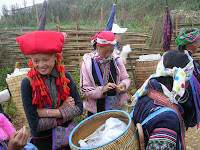 While my teaching schedule hasn't changed I have changed the day I do my weekend planning from the Friday before to the Monday after. I did this because I found at Christmas and New Year, I felt much better on Saturday having not being able to go to work on Friday (because of holidays). Also I'm still thinking more like a child on Mondays, after spending 16 hours with them over the previous 2 days!
While my teaching schedule hasn't changed I have changed the day I do my weekend planning from the Friday before to the Monday after. I did this because I found at Christmas and New Year, I felt much better on Saturday having not being able to go to work on Friday (because of holidays). Also I'm still thinking more like a child on Mondays, after spending 16 hours with them over the previous 2 days!So, this change of tactic meant that I had 3 non-working days in a row between Christmas and New Year. I finally took the chance to do something I've been intending to do forever - take a ride to Binh Chau, a town about 70 kilometres away along the nearest highway to Mui Ne (where David and I spent the first few days of January last year).
The main reason for going to Binh Chau is to visit the hot water springs. I found from my road maps book and from Lonely Planet that there is also a coastal road via Long Hai though I couldn't be sure how far I would get. Also I've never driven this way before or anywhere far by myself - so it was a bit of an adventure.
 The road turned out to be very easy to follow, and also much quieter than the highway was (on the way back to Vung Tau in the afternoon). I discovered that there are very many resorts - some of them stupendously opulent - in existence or being built along the road after Long Hai. I really enjoyed this part of the journey and almost didn't want it to end.
The road turned out to be very easy to follow, and also much quieter than the highway was (on the way back to Vung Tau in the afternoon). I discovered that there are very many resorts - some of them stupendously opulent - in existence or being built along the road after Long Hai. I really enjoyed this part of the journey and almost didn't want it to end.Binh Chau is quite spread-out for a small town. The road took me into a commercial part of the town and past the bus station, and then suddenly I was on the other side with no idea of where to go, especially as I'd passed a large intersection near the bus station. Anyway ... on I went eventually hitting highway 55 which continues up the coast to Phan Thiet and discovered a sign directly me to the springs.
 From there I promptly got lost, winding up instead back in another part of Binh Chau town. So I had to ask directions from a garage, turn around and head up a road I had mistakenly ridden past. To happen upon a very large resort which is the springs complex. Here you can stay, dine, drink, boil eggs (in the really hot springs), wander around the gardens, play in the amusement park, have a massage, take a mud-bath, and bathe in the warm springs which have been turned into swimming pools. Not quite as natural as I was hoping for :(
From there I promptly got lost, winding up instead back in another part of Binh Chau town. So I had to ask directions from a garage, turn around and head up a road I had mistakenly ridden past. To happen upon a very large resort which is the springs complex. Here you can stay, dine, drink, boil eggs (in the really hot springs), wander around the gardens, play in the amusement park, have a massage, take a mud-bath, and bathe in the warm springs which have been turned into swimming pools. Not quite as natural as I was hoping for :(However, it was a relaxing place to be. Being still a working day it was quiet. A few foreign and Vietnamese guests staying overnight plus some day visitors like me. I spent more than an hour in the water, using the waterfall as massage therapy and generally soaking up the minerals and the sun. There was absolutely no-one boiling eggs, and that section all looked rather dilapidated, though since coming back various people (my manager and colleague) have told me what fun it is. By the way, you cannot bring your own eggs to cook, or any other food for that matter. It has to be declared at the ticket check and left there for collection on your departure.
Coming back, I took the highway route which goes through Dat Do and Long Dien to Ba Ria. Much busier but just as straightforward as the coastal road. The landscape of Ba Ria-Vung Tau province is quite interesting in this area. We have Big and Small Mountains in Vung Tau surr0nded by dead flat land and waterways. Behind Ba Ria is another mountain but then flat open land across to Long Dien and Dat Do, yet the land between the coastal road and the highway (and the back drop to Long Hai) is filled with more mountains. From the flat land the roads rise gradually to low hills around Binh Chau. I'd really like to go exploring much more to get a better feel for the land and what is in it.



















































